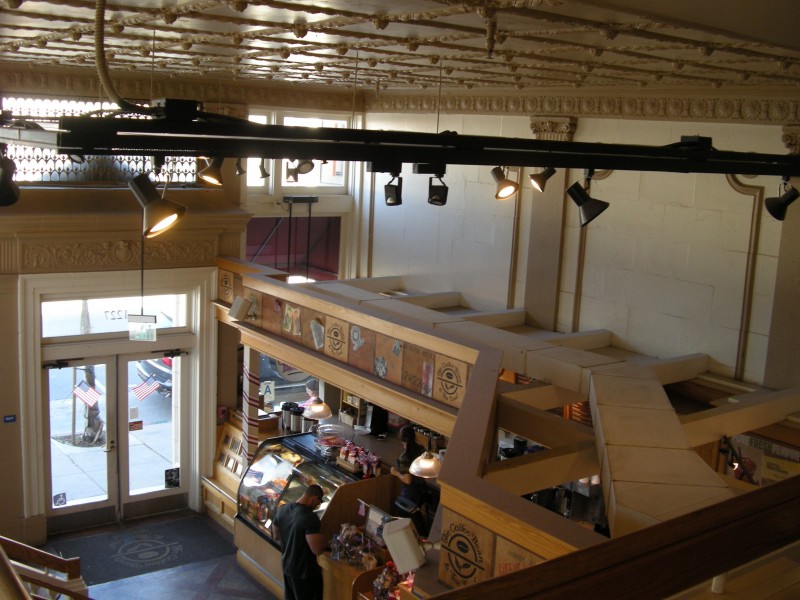
Although it did not keep the planned name of the Theatre Francais, it retained its French decor. 45th Street in New York City, and was the smallest of the houses they operated with a capacity of 603. The second Bijou Theatre was built by the Shubert family in 1917 at 209 W. The Music Master (1905–06 627 counting 124 shows at Belasco).The Auctioneer by Charles Klein (1901 105 perf.).The Climbers by Clyde Fitch (1901 163 perf.).Sister Mary by Glen MacDonough (1889-1900 120 perf.).The Widow Jones (1895), basis for 1896 Edison short film The Kiss.It was demolished in 1915 and replaced by the present high-rise office building, which opened in 1917.
BIJOU THEATER MOVIE
The Bijou was later used as a silent movie house. After giving its 400th performance (counting the Aerial Gardens) on August 25, the play closed on September 18. From June 29 to August 7, 1909, it played at the Aerial Gardens atop the New Amsterdam Theatre, with new scenery and costumes, moving back to the Bijou August 9. Wise and Douglas Fairbanks, which opened September 29, 1908. The next big hit was A Gentleman from Mississippi, starring Thomas A. Another long run was The Music Master, starring David Warfield, transferred from the Belasco Theatre on January 9, 1905, and playing 511 performances, for a total at the two theaters of 635, before closing September 29, 1906. Dixey, played its record-breaking run of 603 performances at the Bijou beginning September 4, 1884. The first production was Orpheus and Eurydice, an adaption by Max Freeman of Jacques Offenbach's Orfée aux enfers." Īdonis, starring Henry E. McElfatrick & Son and opened December 1, 1883, as the Bijou Theatre. They agreed to advance sufficient funds to erect a new house, which was designed by J. Barton leased the premises for five years from its owner, Edward F. īut the house proved too small to be profitable, so after the performance of July 7, 1883, preparations for tearing it down began. In 18, Lillian Russell appeared in three different operettas. Considerable money was spent and when they reopened the house on March 31, 1880, as the Bijou Opera-house, it looked like a modern and well-regulated theatre. McCaull, a Baltimore lawyer, and Charles E. The house had many changes and names until John A.

Located at 1239 Broadway between 30th and 31st Streets, had been converted from a drinking and gambling establishment into a theatre for variety, and opened August 26, 1878, with Jerry Thomas as proprietor. The Bijou Theatre went through a major renovation began in 2005.The first theatre to carry the Bijou name was the Theatre Brighton, which also served as an opera house and silent movie venue throughout its history. Today the Bijou Theatre is largely intact and is a popular venue for small stage shows, acoustic concerts and small bands. The theatre was then threatened with demolition. It operated as an adult theatre until 1975. It went over to adult films on Apand was renamed Bijou Art Theatre on September 8, 1966. Over the years, the Bijou Theatre lost its small vertical sign and marquee and the tiny boxoffice is long gone. Motion picture projection equipment no longer exists at the Bijou Theatre, though the projection booth which was wedged in between the two balconies still exists and is used as a follow spot location.

Old photos suggest a pit-organ or photo-player was used to accompany pictures in the silent era. The Bijou Theatre never had a theatre organ.

The Knoxville Chamber Orchestra performs regularly in the intimate hall. The hall has a brick exterior, but the interior is completely wood and plaster. The ceiling is mostly flat with restrained moldings at the walls. The boxes are flanked by large Corinthian columns supporting cherubs leaning on broken pediments. The upper boxes have their own stairways and do not connect with the balconies. The auditorium features three tiers of boxes on each side of the proscenium, with the orchestra boxes still in place. The lower balcony is attained from stairs at the ends of the standee area. At this time, though large, the upper balcony is only used for technical equipment as emergency egress is quite limited. The Bijou Theatre has two separate balconies: the upper dating from the regrettable era of segregation was accessible only from a side street. The theatre was designed by architect Edward Okel. The 1909 auditorium was built behind the Lamar House Hotel (c.1840) using the center of the old hotel as the theatre’s lobby. It opened on Maas part of the Well’s chain of theatres and contained 1,503 seats. The Bijou Theatre is a charming venue built for vaudeville and later adapted for cinema.


 0 kommentar(er)
0 kommentar(er)
